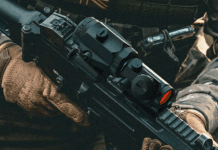Welcome to the realm of precision and reliability with the H30 radar liquid level sensor. This state-of-the-art sensor represents a significant leap in liquid-level measurement technology. Utilizing advanced radar techniques, it offers an unparalleled blend of accuracy and versatility.
Whether it’s monitoring river levels or ensuring dam safety, the H30 is engineered to meet a wide range of measurement needs with its precise data and robust design. The H30 level sensor meter is designed purposefully for river, dam, sewer, or pool level monitoring.
So, you can either implement these sensors for large-scale environmental monitoring or something as simple as monitoring your water tank! However, before making any decision, let’s discuss all the features that the H30 comes with.
Technical Specifications of the H30 Liquid Level Sensor
The H30 model from Lintechtt, a 60GHz radar liquid level sensor, stands at the forefront of precision measurement technology.
Utilizing Frequency-Modulated Continuous-Wave (FMCW) technology, it offers a remarkable ability to measure distances ranging from as little as 0.1 meters to as far as 30 meters, maintaining an impressive accuracy of 2mm.
This high-level specificity in measurement ensures reliability across various applications, making the H30 an essential tool in scenarios where precision is key. The combination of advanced radar technology with such a broad measurement range showcases the H30’s versatility and technical sophistication.
The sensor operates within a frequency band of 60-64GHz and utilizes a lens antenna type to deliver a beam width of 6° for both elevation and azimuth, ensuring focused measurement with minimal interference.
With an operational range of 0.1 to 30 meters and an impressive accuracy of ±2mm within a 10-meter range, the H30 stands out for its precision in various conditions. It supports RS-485 communication, allowing for seamless integration into existing systems.
Encased in a compact and lightweight design, this sensor endures extreme temperatures from -40 to 70°C, consumes less than 2 watts of power, and is IP30 rated, signifying no protection from liquids but robustness against solid objects larger than 2.5mm.
Design and Operation
The H30 Radar Liquid Level Sensor has a lens antenna, boasting a precise 6°x6° beam angle. This specialized design is important to filter out clutter interference, a common challenge in diverse measurement environments.
As a result, it provides remarkably accurate and stable readings, essential in applications where precision is paramount. Additionally, its low power consumption is a standout feature, ensuring efficiency and sustainability.
The sensor is also designed for straightforward installation, making it an accessible solution even in complex scenarios. Together, these design elements make the H30 not just a sensor, but a reliable, easy-to-integrate tool for precise liquid level measurement.
Applications
The H30 radar liquid level sensor can be used in various environmental and infrastructural settings. River level monitoring offers precise data crucial for managing water resources and predicting flood risks.
The sensor’s role in dam safety warning systems is pivotal, providing early alerts that help prevent potential disasters. In urban areas, its application in sewer level monitoring aids in maintaining efficient wastewater management.
Additionally, the H30 sensor ensures accurate pool level monitoring, essential for both maintenance and safety in recreational facilities. These diverse applications showcase the sensor’s versatility and reliability in critical monitoring tasks.
Final Words
To conclude, the H30 sensor is a game-changer, offering consistent performance unaffected by common environmental challenges. Its broad spectrum of applications, from river monitoring to dam safety, highlights its versatility and essential role in various sectors.
Embracing such technology represents a significant step forward in ensuring efficient and safe liquid level management.













